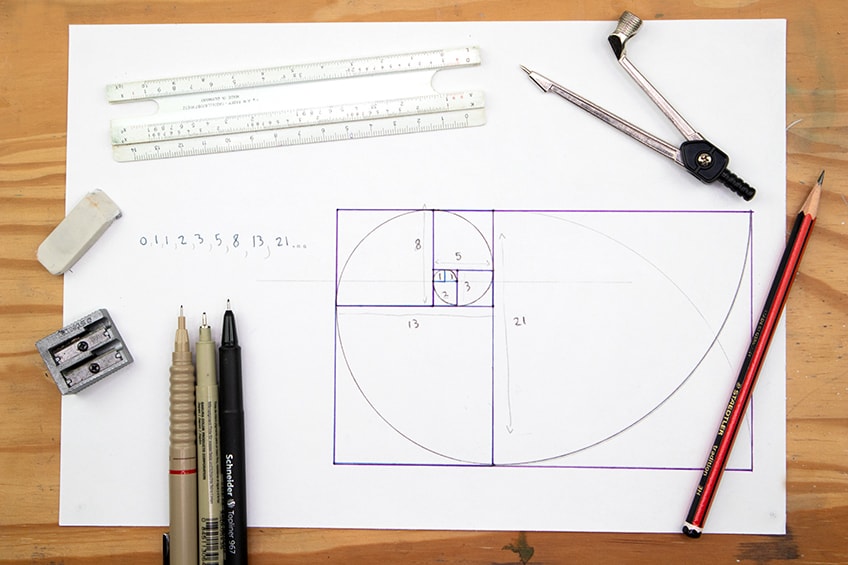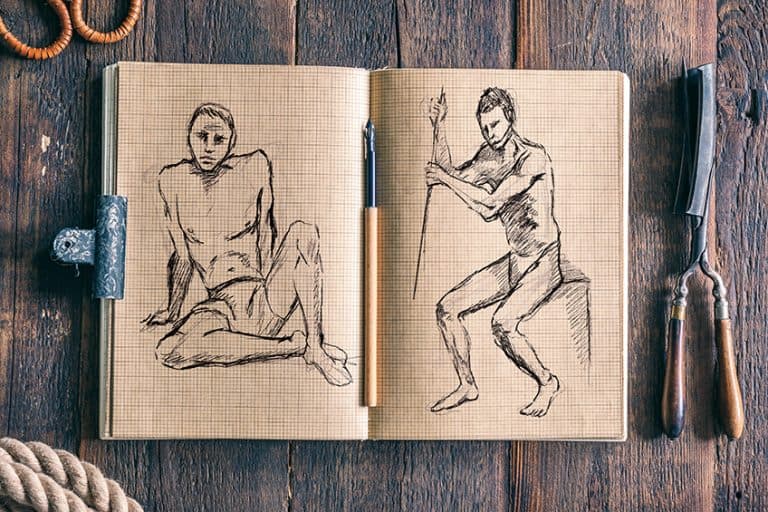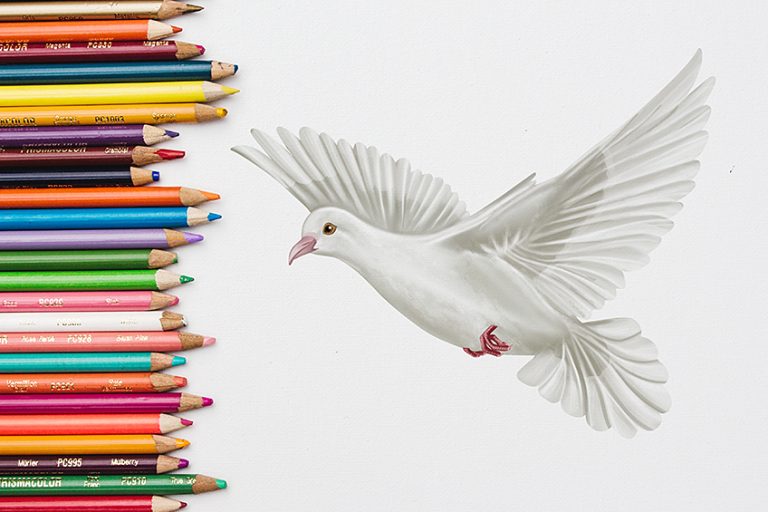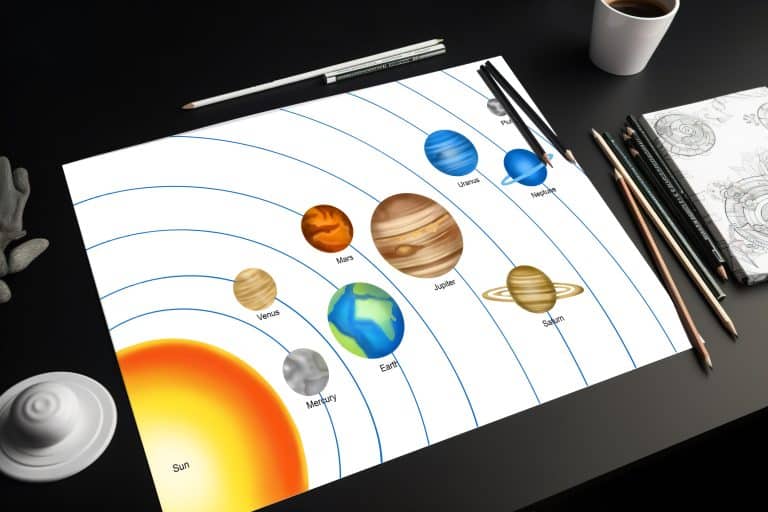Golden Ratio in Art – Learn How to Use the Golden Ratio in Art
The golden ratio, also known as “Phi” and more popularly known as the Fibonacci Sequence, is an irregular equation. A ratio of 1 to 1.618 is what is referred to as an irrational number, similar to that of the famous Einstein equation “pi”. For the sake of beautiful aesthetics, this ratio can be a helpful tool for capturing balance and pleasing proportional values within your artwork. The idea is that it is a perfect rectangle, and when divided into uneven halves with a perfect square on one side, the leftover rectangle will have the same proportions as the original perfect rectangle. If this shape is continuously divided into two using the ratio, it will always result in a perfect or golden rectangle and square. Once you know how to draw this particular geometric sequence, it can be a great tool to harmonize and balance out your own artwork’s compositional value.
Table of Contents
An Easy Guide to Using the Golden Ratio in Art
In this tutorial, we will be introduced to the golden ratio, seeing how this particular equation has influenced some artworks and how we can use this sequence in our work. Beneath the complicated versions of both understanding and using this ratio, we will find in this tutorial that it is quite a simple algorithm and quite helpful for aesthetic composition within an artwork.
There are also various ways to create a Fibonacci sequence and, in this tutorial, we will be looking at the most helpful way to use this sequence in its most basic format.
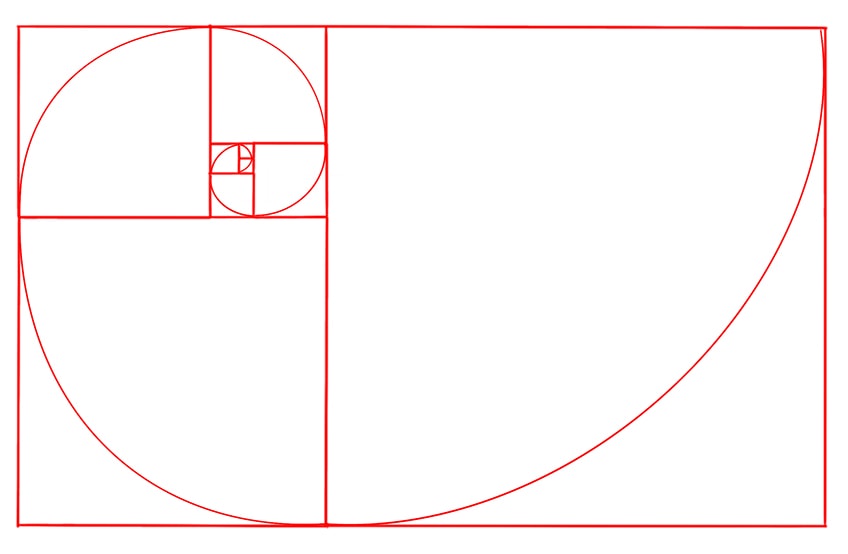
Necessary Materials
Learning how to use the golden ratio starts with understanding the basics. We don’t need many materials for this foundational approach to learning the Fibonacci ratio. What we will need is a ruler, a pencil, a ballpoint pen, and a compass. We will also want to make sure that we have an eraser on hand as well as a sharpener for any silly mistakes and to keep our pencils sharp for fine lines. All the materials can be found through the different links below:
- HB pencil
- Ballpoint pen
- Compass
- Eraser
- Sharpener
- Good paper (200 g/m – 250 g/m recommended)
Preparation
Once we have all our necessary materials, we will want to place ourselves within an environment whereby it will help us to focus on the tutorial at hand. The golden ratio can be a little tricky to understand so you will want to have your full engagement within this tutorial, at least for the first half.
Once we have the process figured out, we then can play around with how we use it in our work to set up an aesthetically balanced composition.
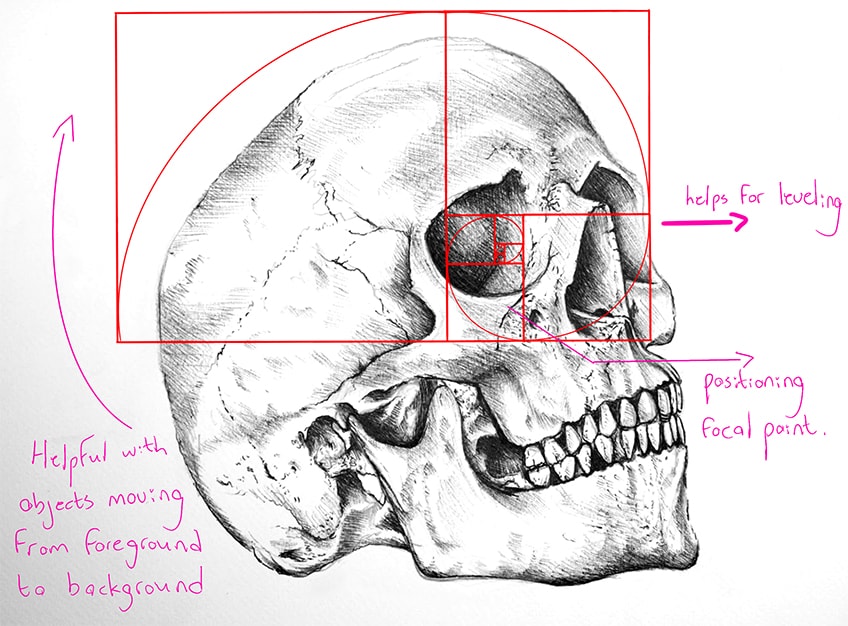
How to Use the Golden Ratio in Art
In this tutorial, we will look at some examples of how the golden ratio has been used within the genre of art. We want to build up an understanding of the unique sequence and how it has been used to apply it as best we can to our work. We will then move on to learning how to draw the golden ratio using the correct sequence.
From there we will create a landscape drawing that describes how to apply it to your artwork. Now that we know what we should expect from this tutorial on how to draw the golden ratio, let’s get started!
What Is the Golden Ratio in Art?
The existence of the golden ratio is an eternal universal force in one sense as it could be said that all mathematical formulas and equations are embedded into the known universe. In humanity’s history, it was popularized by Euclid himself (who is responsible for Euclidian geometry) around 365 BC.
However, the term “Golden Ratio” was coined by Martin Ohm in the 1800s and from there was then designated the name “Phi” in the 1900s by an American mathematician Mark Barr.
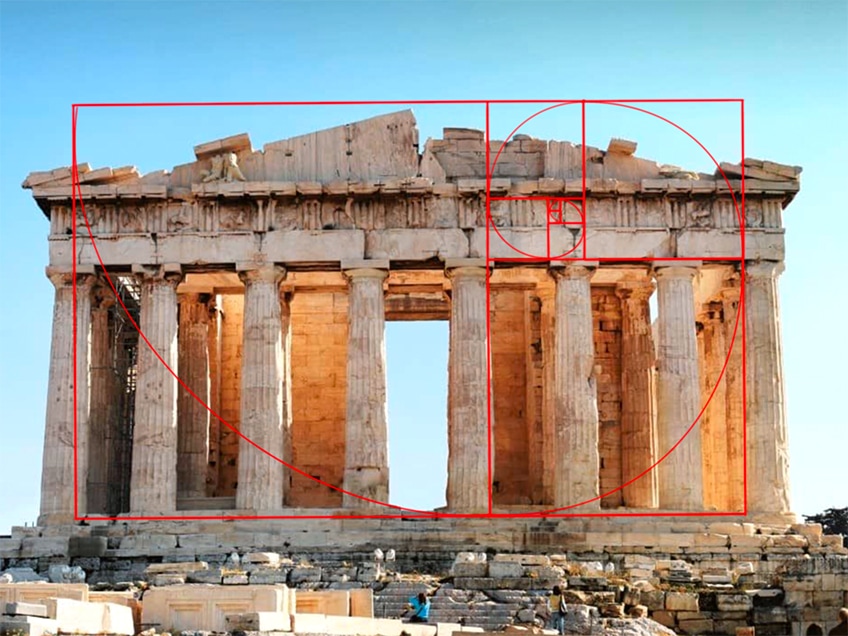
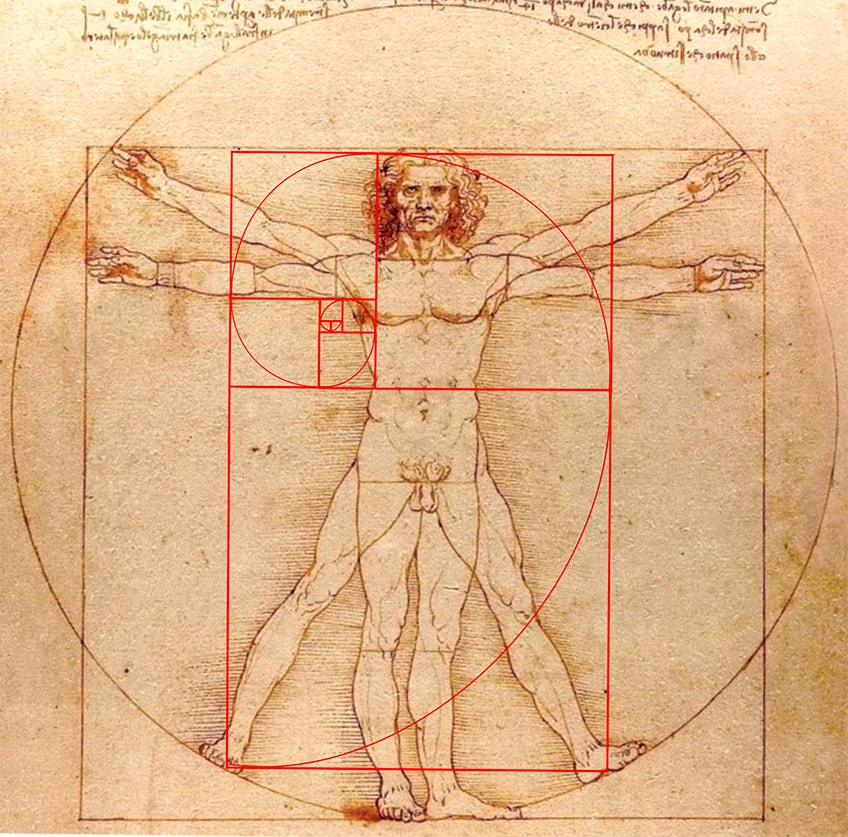
The book was illustrated by Leonardo Da Vinci, whereby it is speculated that the sequence of the golden ratio was used to create various drawings, including the famous “Vitruvian Man“.
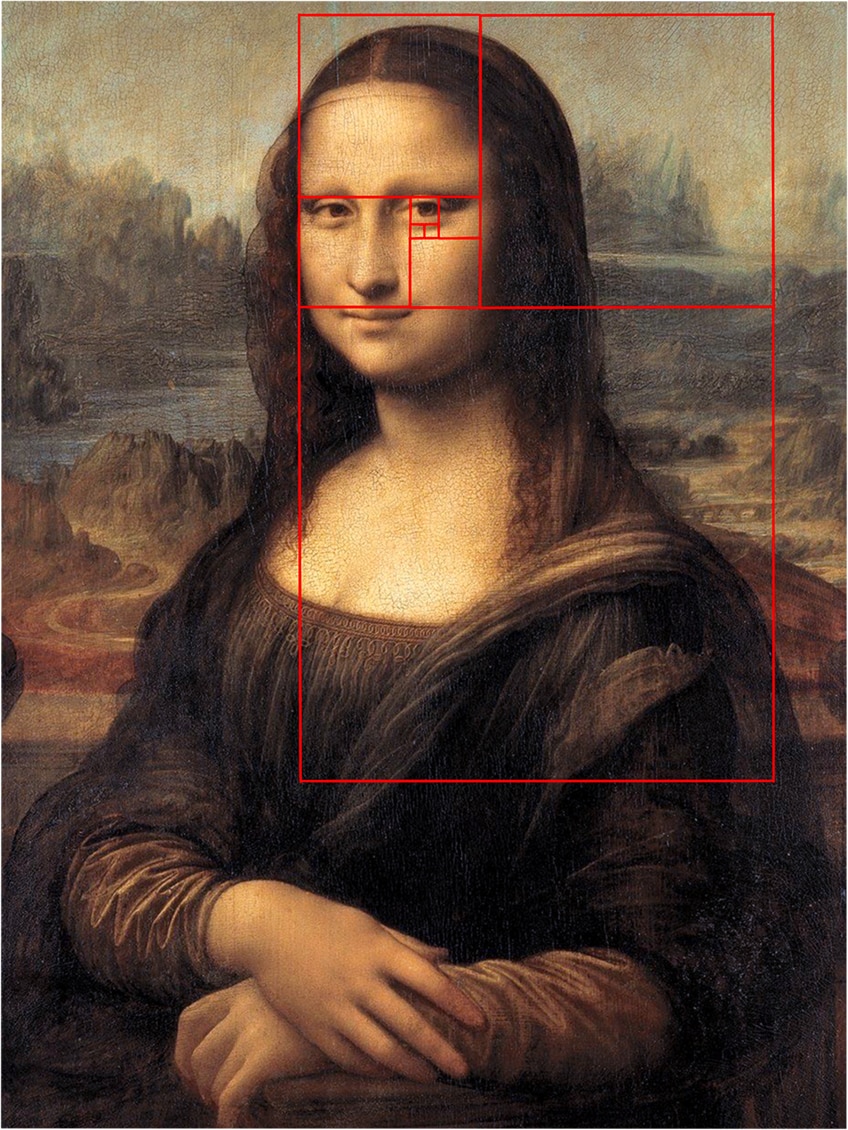
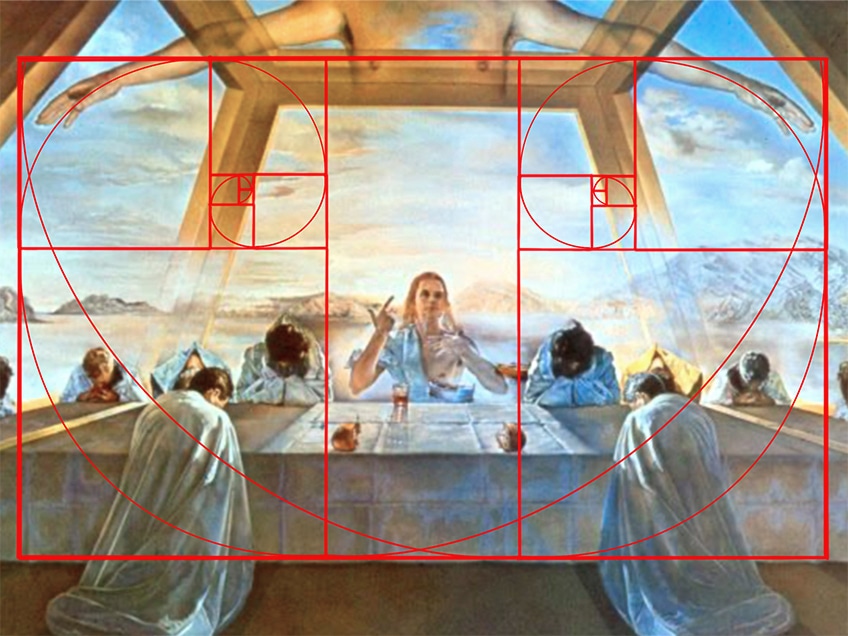

This means that the Fibonacci sequence or golden ratio will be easy to find in artworks with natural elements as they will inevitably be formed by the laws of the universe.
How to Draw the Golden Ratio
Just because the Fibonacci sequence is a commonly occurring pattern doesn’t mean it’s a useless tool, in fact learning how to use the golden ratio in paintings and drawings is essential for an artist. It provides the artist with a deeper understanding of configuring an artwork to have well-balanced proportions and composition.
There are many ways to learn this skill that is challenging and confusing but we will learn the basic and most helpful way to draw the golden ratio.
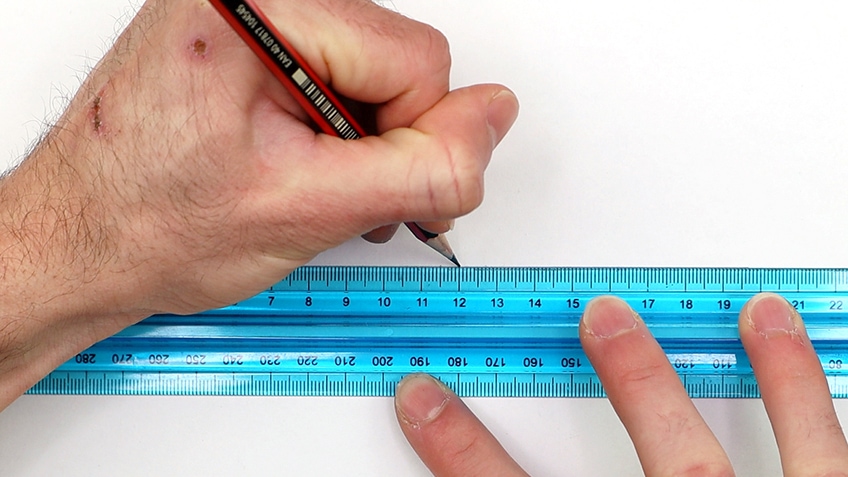
Understanding the Sequence in Numbers
Firstly, we want to break down the basic formula of the Fibonacci sequence, which is understood in an equation but is most easily understood as a number sequence. It goes as follows: if you start at 0 and add 1, you will have 1 as a result. By nature of the sequence, you have two 1’s, which equals 2. From there, your next two numbers to add will be 1 and 2, which give you three, then 3 and 2, which give you 5, and so on.
The number formula is as follows: every previous number added to the current number will equal the next number. This sequence is infinite.
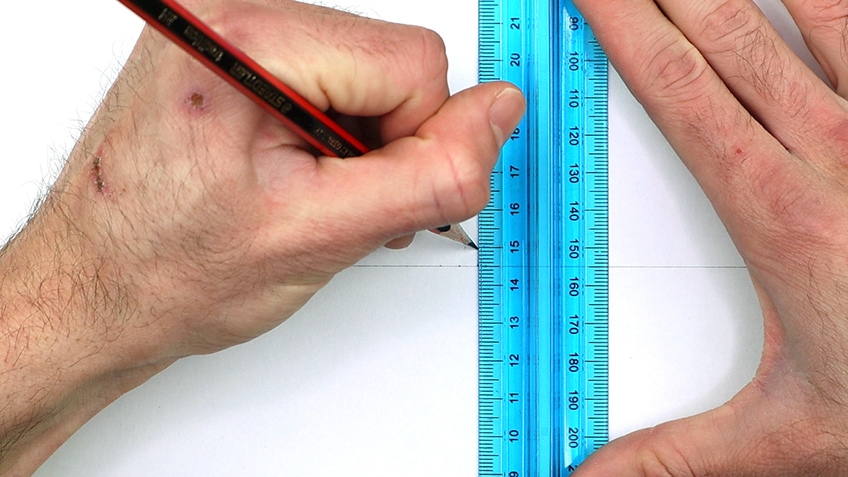
Understanding the Sequence in Geometry
How this plays out in a geometric formula is quite simple as well and easily transferable, the magic of math. For instance, if we start with a single line and keep to the same measurement size for a single block, we can eventually build up the golden ratio.
Starting with your ruler draw a single horizontal line.

Start with a single square, evenly sized on your horizontal line.
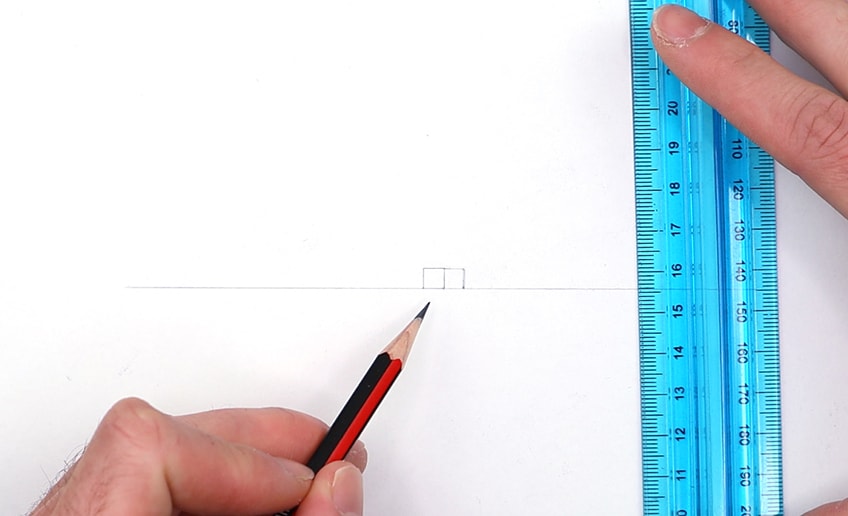
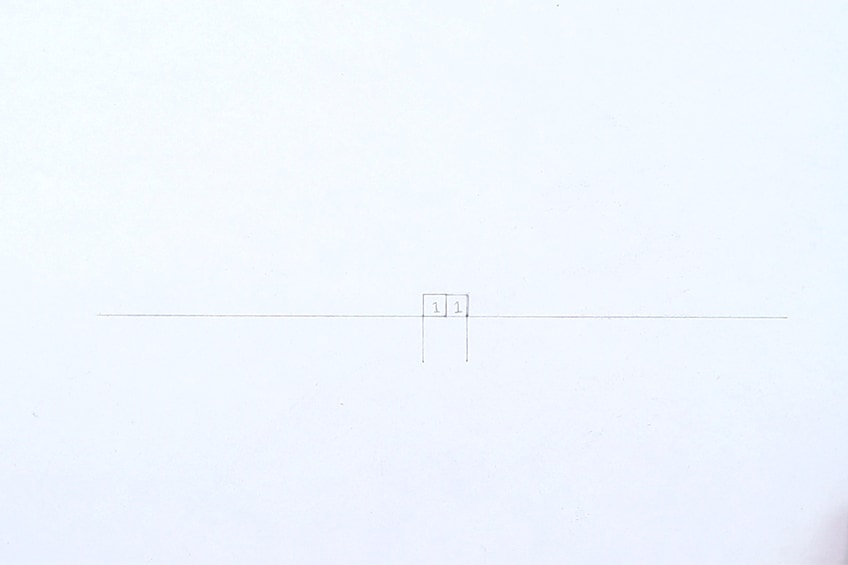
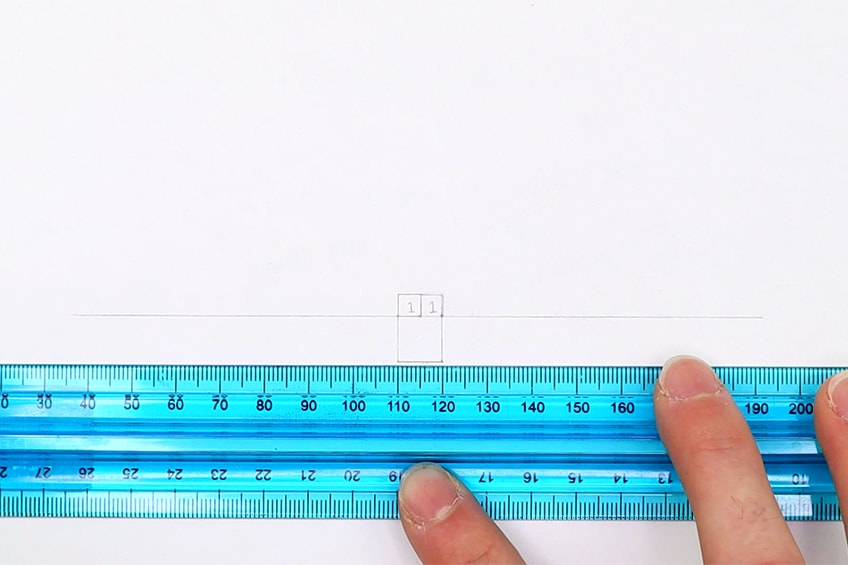
You will find that every time you turn your page clockwise from this point on, the previous blocks have set up the number of blocks needed for the next square.
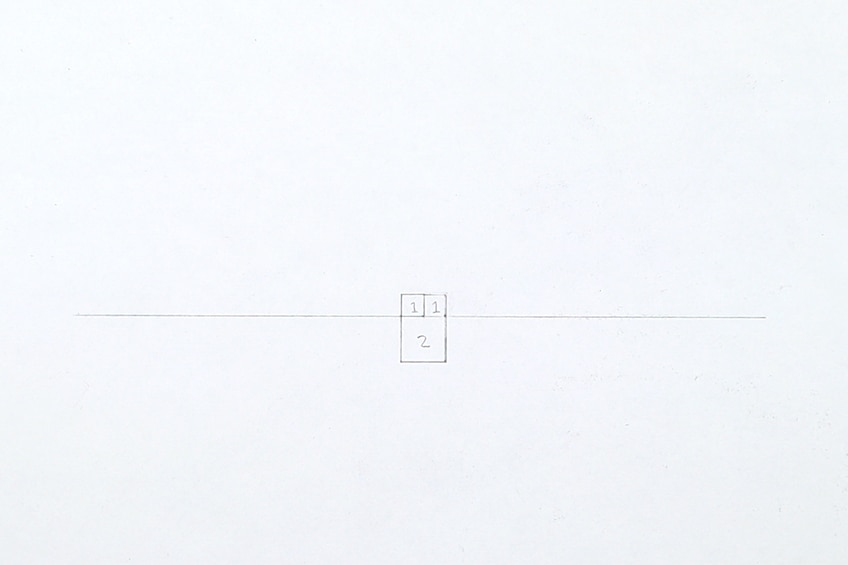
If you don’t want to turn your page you can also imagine drawing each next perfect square in an anti-clockwise format.
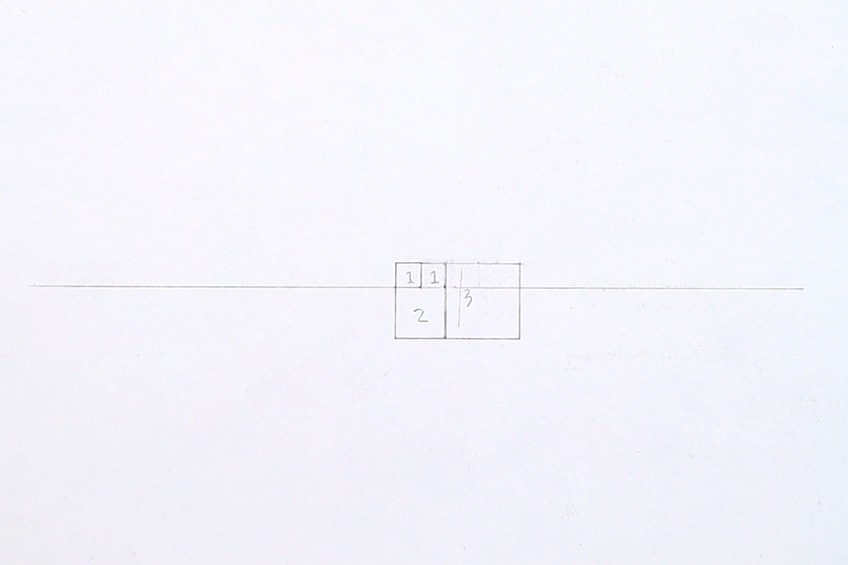
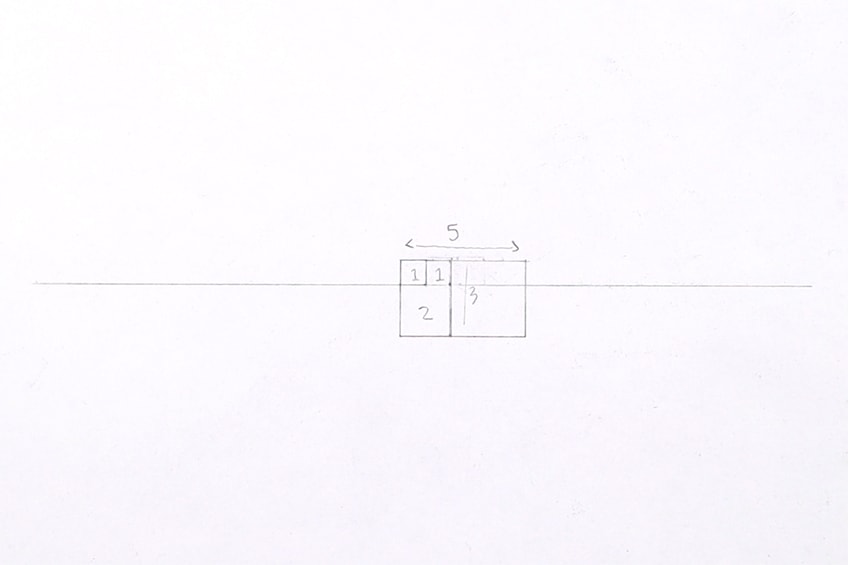
Again, if you stick to the same scale of blocks and work in an anti-clockwise direction, the previous blocks will have been set up both in number and block the number of blocks needed for the next square.
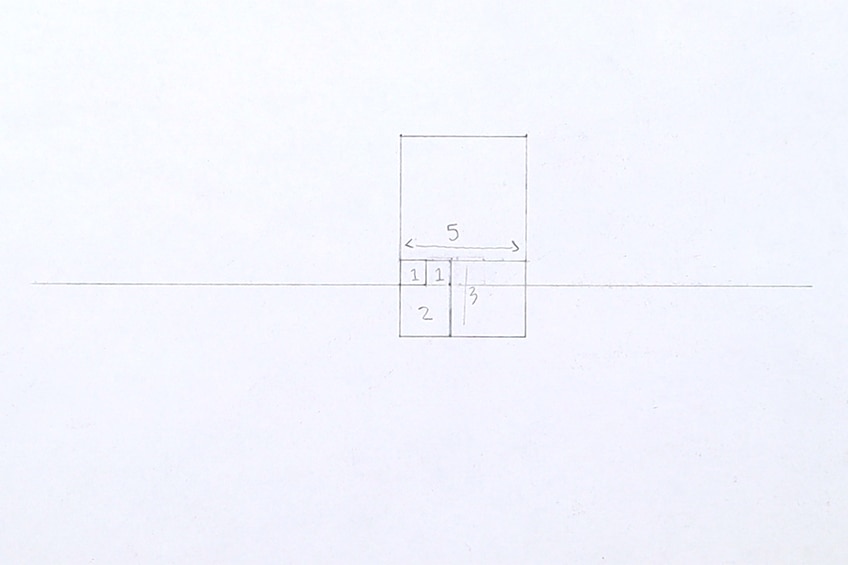
Essentially, we are drawing a set of perfect squares in a circle that get larger and larger, determined by the number sequence.
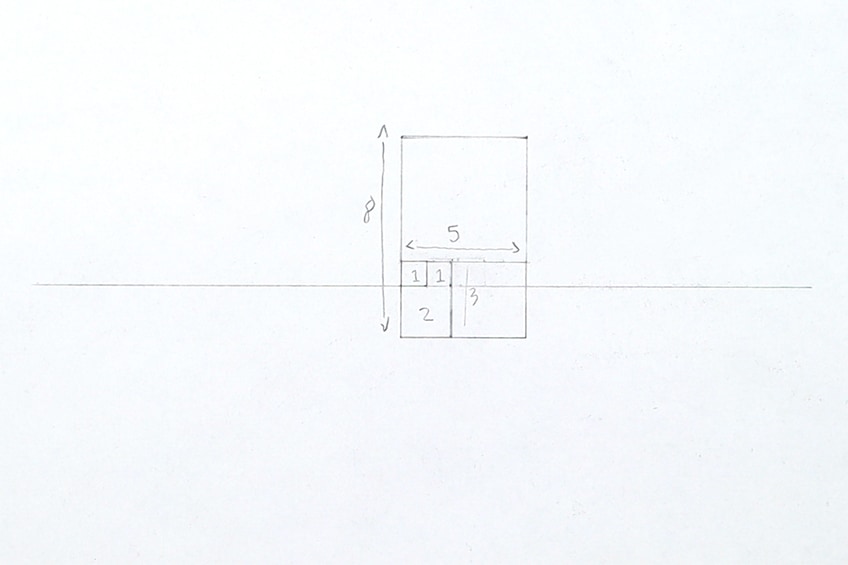
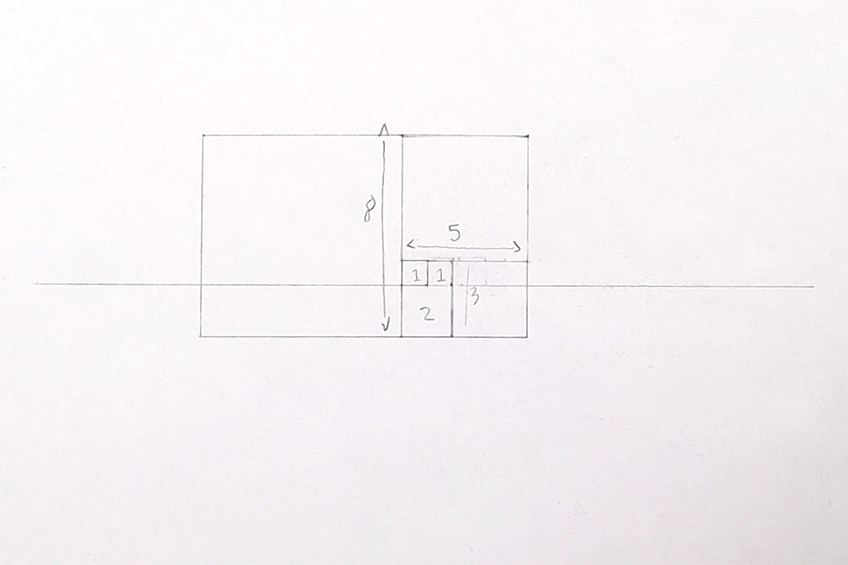

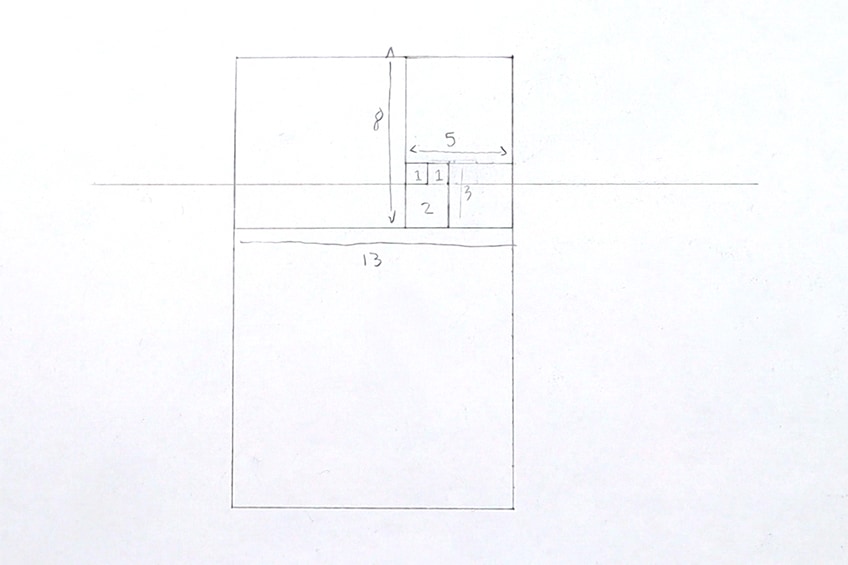
If you have kept your page on the table, unmoved, you should have worked around each square in an anti-clockwise movement each time.
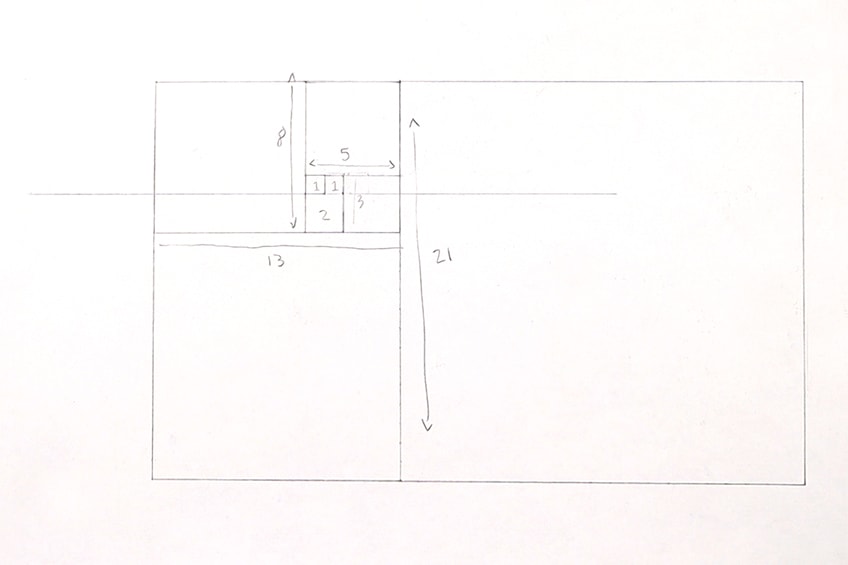
You can also write out the number sequence to give yourself a double-check to see if your arrangement of squares correlates with the sequence of numbers.
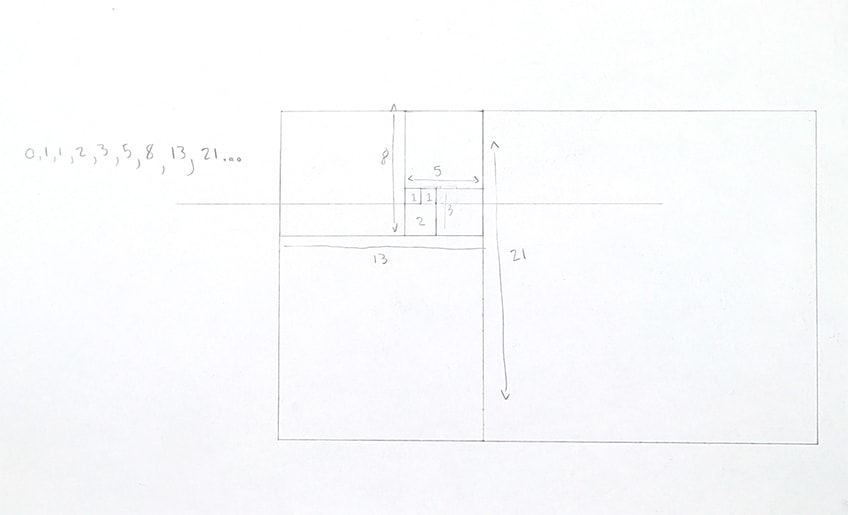
Drawing the Golden Spiral
Using your compass and pencil we now going to draw in a clockwise motion a curve within each square. Starting with the largest square, we want to draw a curvature that will run from the corners of each square flowing into the next smaller one.
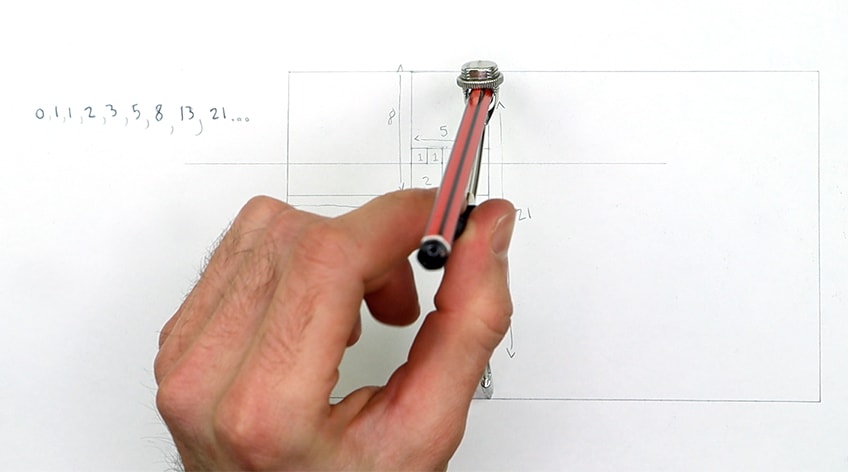
Technically, we are working backward now from largest square to smallest square.

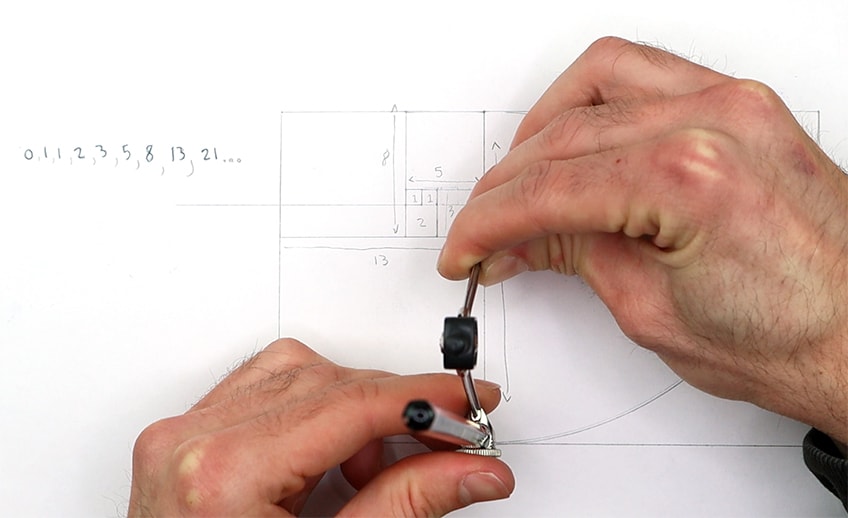
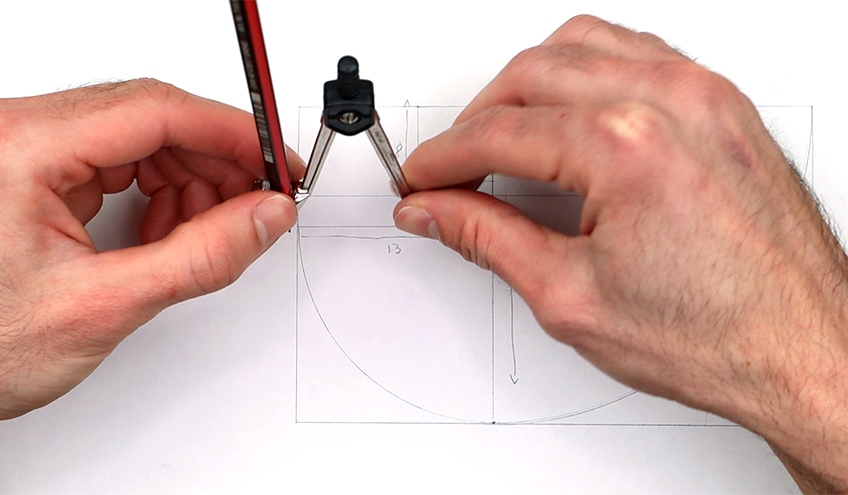
Then you readjust your compass for the next curve and so on.
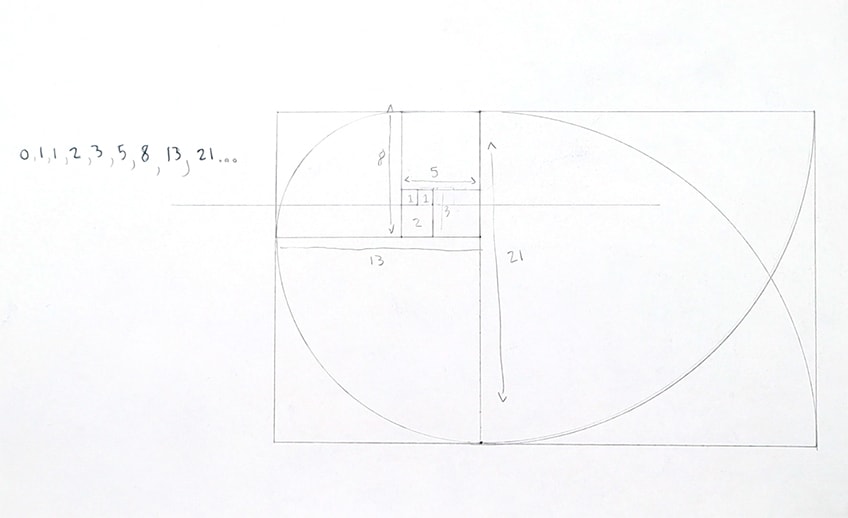
You can freehand it but make sure you take your time and go about it slowly, but at that point, it doesn’t matter.
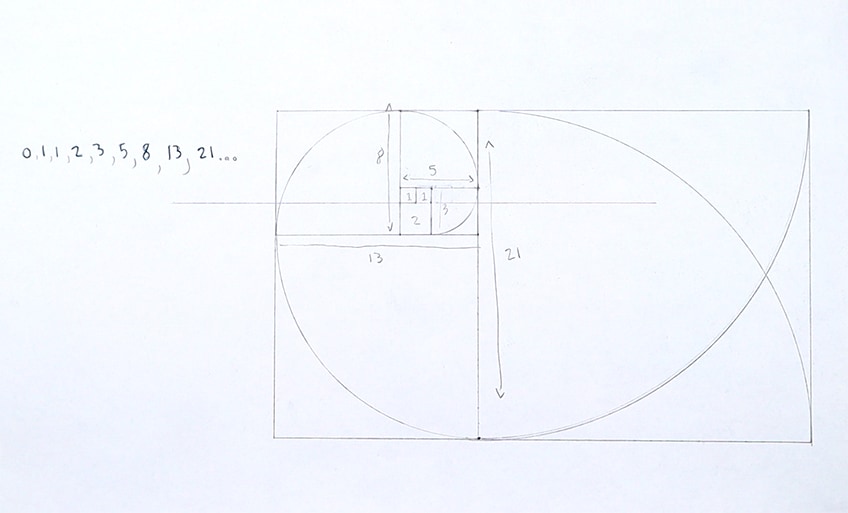
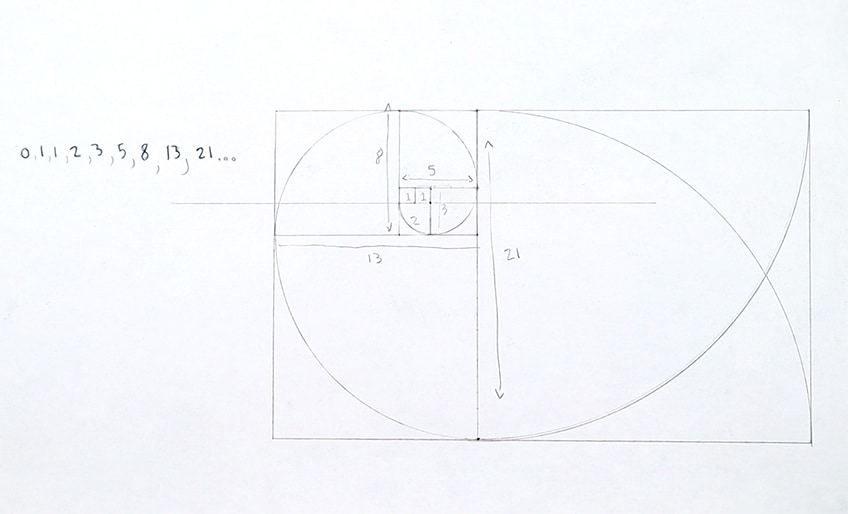
Going Over the Spiral with Ballpoint Pen
To emphasize the spiral within the shapes, connect it to your compass and go over the curved lines drawn in pencil. We just want to emphasize the flow of the spiral and how its curvature changes subtly as it enters the next smaller square.
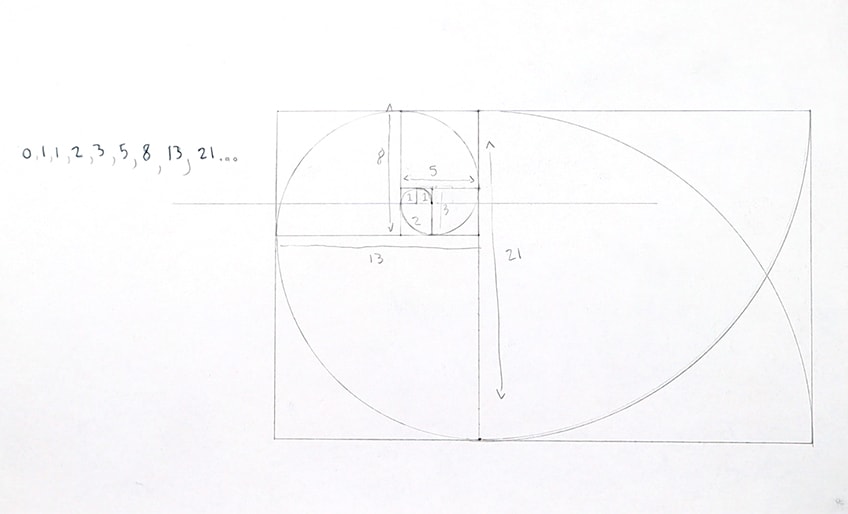
This is the amazing part of math, if your measurements are correct, you can determine the results correctly.
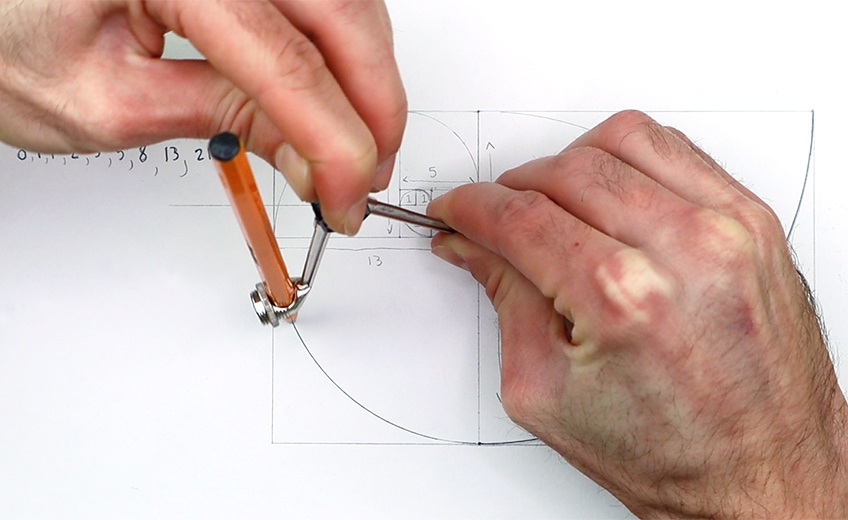
Highlighting the Squares and Rectangles
This next part is more for fun to show you how the golden ratio makes the squares and rectangles inseparable. This is because the geometry of the sequence establishes an intertwining of the two shapes.
If you go over the squares with one color and the rectangles with another, you will always overlap in color every time.
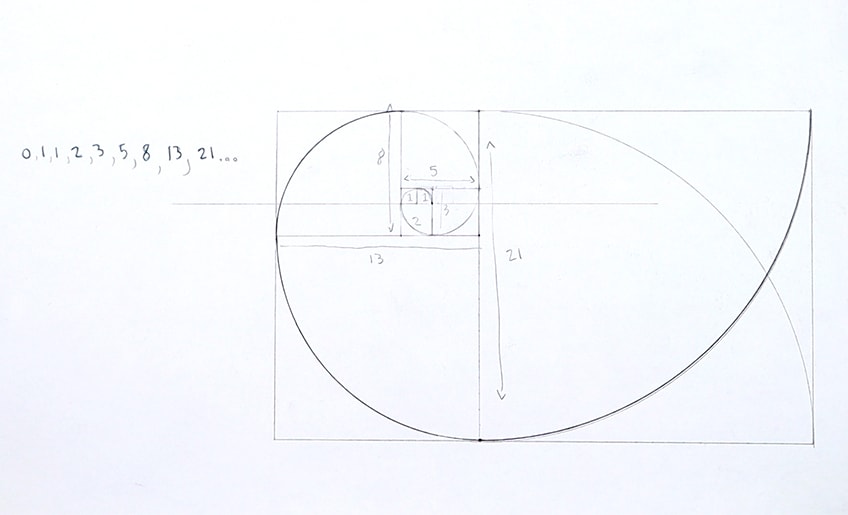
Tips on How to Use the Golden Ratio in Art
There are a few ways one might be able to use the golden ratio in their work. There are various ways to use the golden ratio but perhaps the most powerful way to use it is as an invisible guiding force. By this, what is meant is that the golden ratio has a blueprint utility, whereby it is used as a diagram.
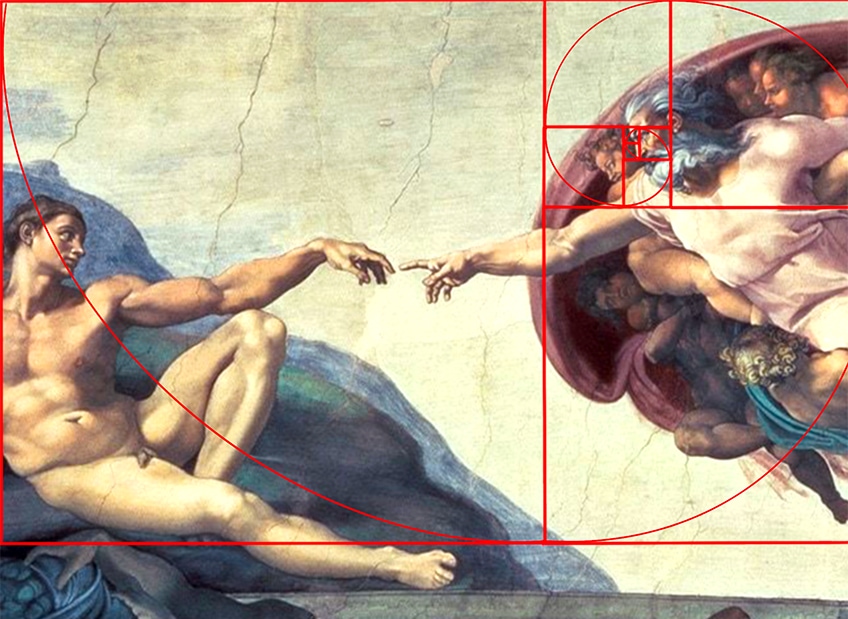
Golden Ratio in Landscapes
For instance, the golden ratio should not be considered a mandatory formula for perfect aesthetics. However, it can be a great tool for guiding a scene. For instance, once you know how to draw the golden ratio, you can then use the mathematical proportions to set up the flow of a scene.

By creating a golden ratio composition, you will find that the work has more harmonization amongst its elements.
Golden Ratio in Portraiture
There are many instances where the golden ratio has been used to assist the process of drawing or painting portraits. Again, this doesn’t mean that it is a hard and fast rule for aesthetics but its mathematical rules can be applied to creating symmetry within faces. When it comes to the human face, symmetry is a key element of the face due to the formation of the skull, and capturing that can be difficult.
The adjustability of the golden spiral and rectangle can also be used as a measuring tool to establish features on the face.
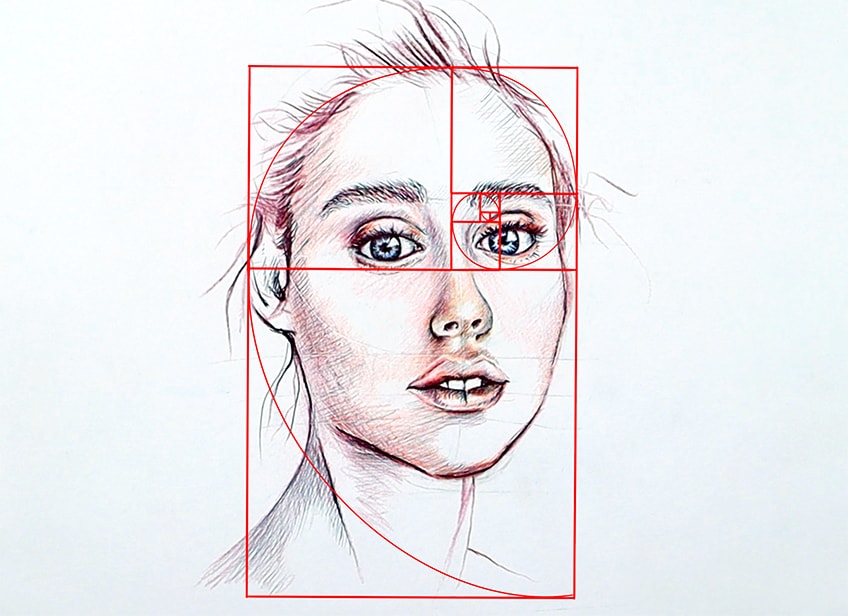
The Golden spiral can be a great assistance for capturing symmetry even when there is a distortion in scale due to perspective.
Seeking Out the Golden Ratio in Nature
The point is the golden ratio can be found quite often because it works according to the laws of physics as does nature. This means its bending and spiral-like quality often is found in all sorts of natural elements and creatures because all nature is subjected to physical laws. The point is to seek it, now that you know how the formula works and how to apply it, allow yourself to use it in all sorts of ways.
Give yourself the creative freedom to explore the potential of the golden ratio within your artwork.
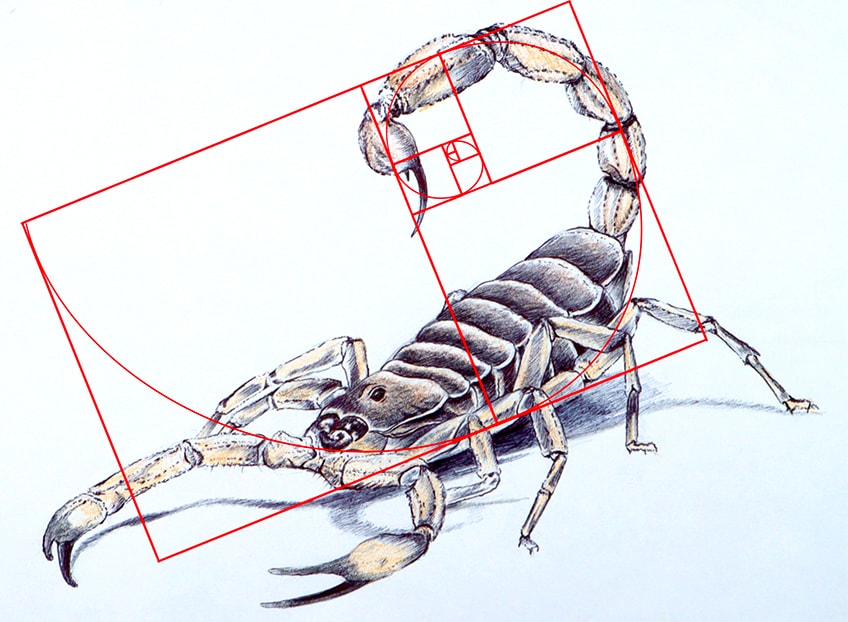
Tips to Remember
- Get comfortable with the Golden Ratio. Learn how it works and have it locked in your brain before exploring how to use the golden ratio in art.
- Explore its potential. As you learn how to use the golden ratio in art, you will find that it can be applied to all sorts of genres in all sorts of ways.
- It is useful for abstract works as well. Another realm to explore is the abstract art genre, where geometric harmony can be explored in its full potential.
- Manipulate it. The golden ratio is something that can be changed in size, direction, inverted, and so on. Play around with duplicating it, changing its scale, and exploring how else it can be used.
- Do more research. Do some research into the golden ratio and see how artists you might find inspiring have used it in their work.
- Have fun with it! Using the golden ratio in paintings and drawings is a great way to explore the functionality of the golden ratio.
Learning about what is the golden ratio in art is an open-ended conversation because there are no mandatory ways in which the golden ratio should be used. It’s a strange phenomenon that has a lot of potential for exploration and its utility is quite broad. Learning the golden ratio in art reveals more each time you use it. Understanding golden ratio composition becomes applicable to more and more genres of art, it is all just a matter of curiosity and exploration.
Frequently Asked Questions
Does the Golden Ratio Create Perfect Balance within Artwork?
The golden ratio’s geometric sequence will constantly create an infinite supply of perfect rectangles and squares, also known as golden rectangles and squares. This geometric formation enables a seemingly perfect harmonization aesthetically when it comes to the composition of elements within space. That being said, the golden ratio composition is more speculation as it does not always guarantee that the use of its ratio results in a perfect balance of aesthetics. The idea is that it is a tool for symmetry or balance, however, it is a complicated geometric structure that can be deviated from or tweaked when applied to your own artwork. The golden ratio in paintings and drawings is often found more than placed as it is an easy structural formation that forms more than it is an intentional choice. However, if used intentionally it can be a great way to create unique aesthetic proportional values within an artwork.
Can You Apply the Golden Ratio to Various Subject Matter?
By nature of the divisional process of the golden ratio, it becomes a naturally occurring structure that is often found in various spaces, photographs, and artworks. This means that because of its infinite division, it is an adaptable structure that can be applied to multiple forms. In the case of art, it can be an excellent tool for portraiture, architectural design, landscape, and various artwork ideas. Although its geometric nature is unique and recurring it doesn’t mean it’s a perfect rule that should always be used. Knowing the golden ratio in art and then using the golden ratio in art is more a matter of subjective choice for formulating a composition. It is a very beautiful geometric sequence that does help to create qualities of symmetry and balance and works for all subject matter. That being said, it is only a tool that should be used if it is necessary for a specific desired outcome, apart from that it should not be considered a golden rule.
Matthew Matthysen is an educated multidisciplinary artist and illustrator. He successfully completed his art degree at the University of Witwatersrand in South Africa, majoring in art history and contemporary drawing. The focus of his thesis was to explore the philosophical implications of the macro and micro-universe on the human experience. Matthew uses diverse media, such as written and hands-on components, to explore various approaches that are on the border between philosophy and science.
Matthew organized various exhibitions before and during his years as a student and is still passionate about doing so today. He currently works as a freelance artist and writer in various fields. He also has a permanent position at a renowned online gallery (ArtGazette) where he produces various works on commission. As a freelance artist, he creates several series and successfully sells them to galleries and collectors. He loves to use his work and skills in various fields of interest.
Matthew has been creating drawing and painting tutorials since the relaunch in 2020. Through his involvement with artincontext.org, he has been able to deepen his knowledge of various painting mediums. For example, watercolor techniques, calligraphy and lately digital drawing, which is becoming more and more popular.
Learn more about Matthew Matthysen and the Art in Context Team.


